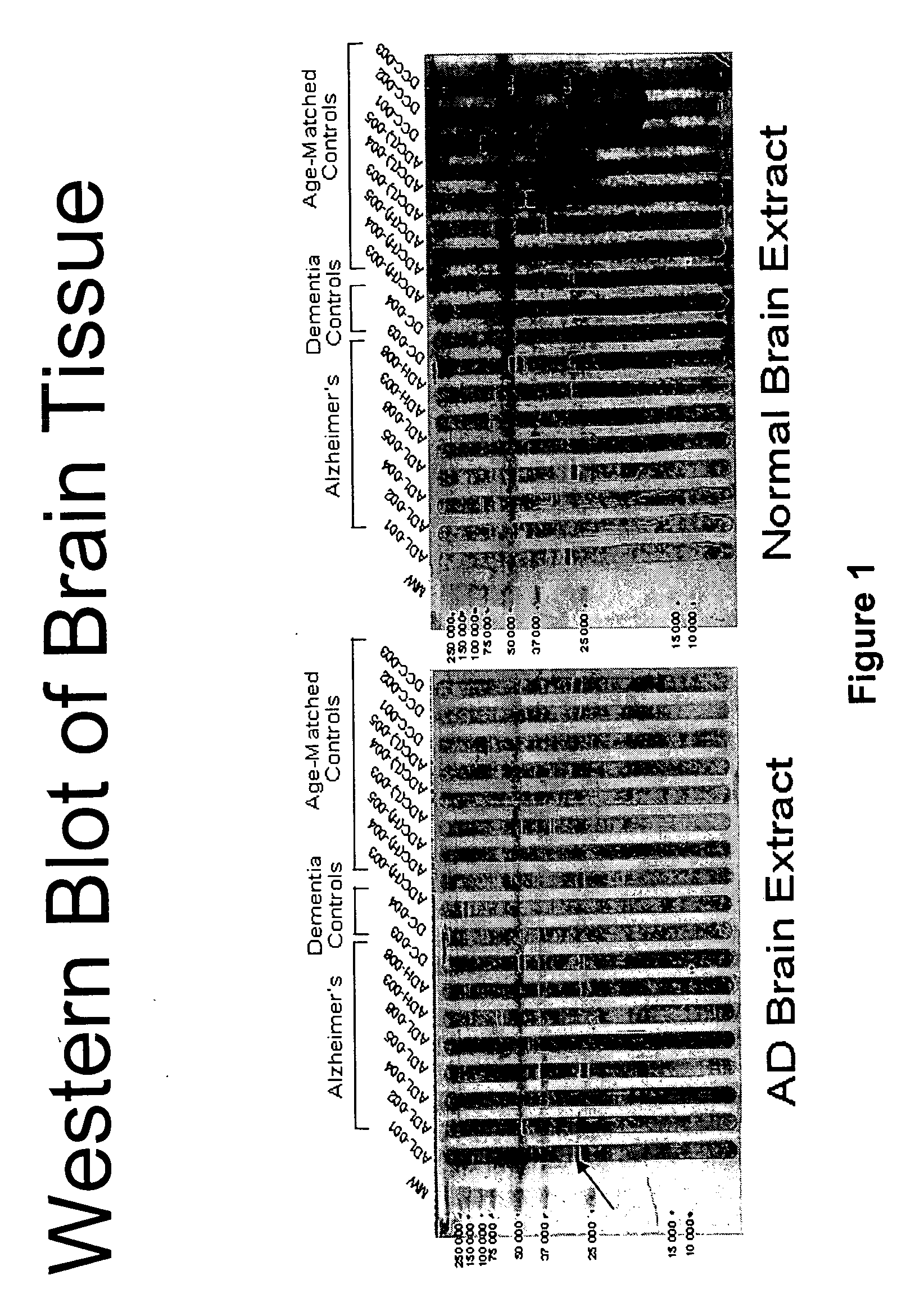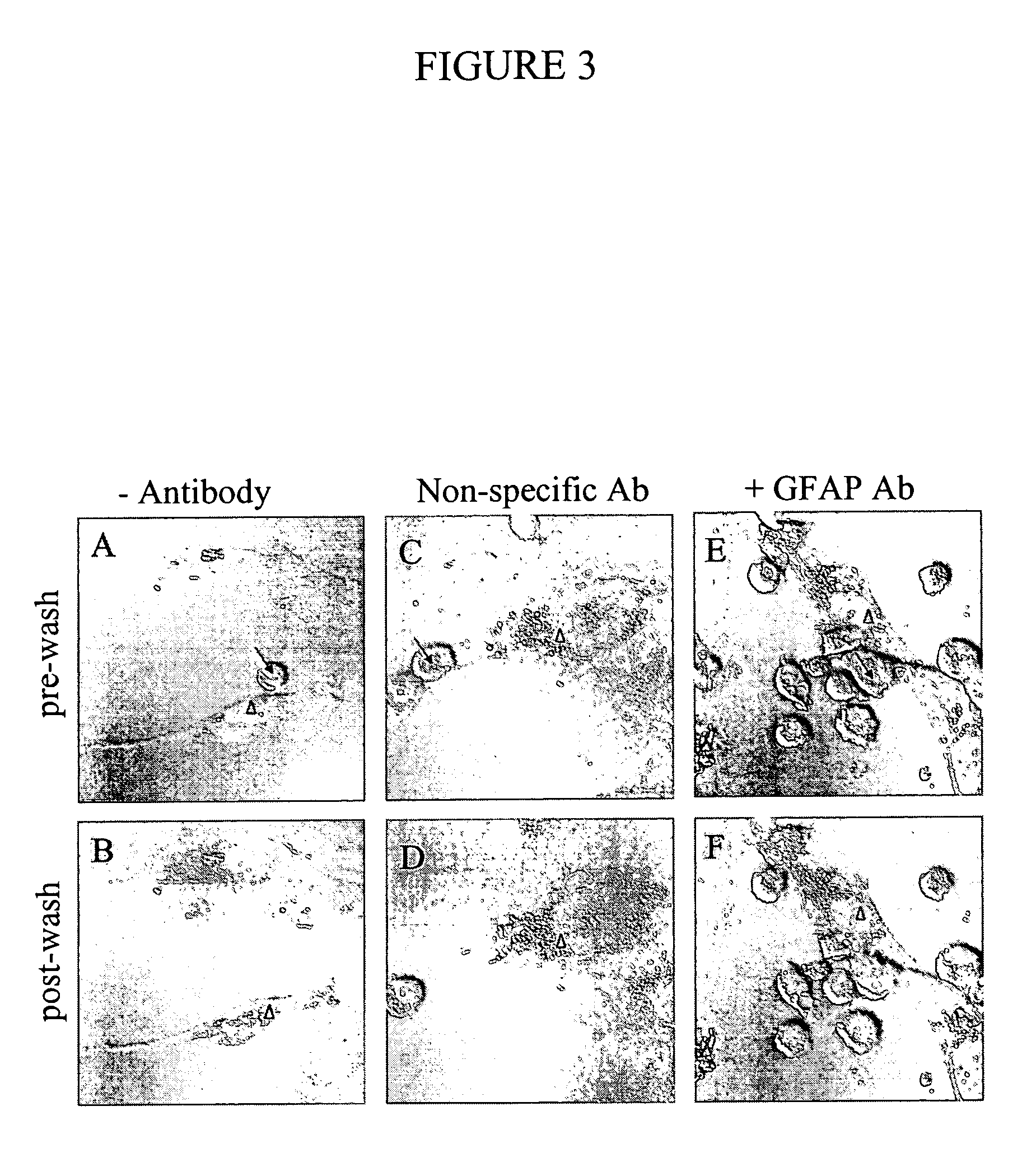Method for retarding or precluding Alzheimer's dementia
a technology for alzheimer's and dementia, applied in the field of methods for preventing or retarding alzheimer's dementia, can solve the problems of not being able to remove the circulating autoantibodies associated with these proteins, and achieve the effects of reducing cognitive ability, reducing the rate of disease progression, and strengthening the effectiveness of pharmaceutical agents
- Summary
- Abstract
- Description
- Claims
- Application Information
AI Technical Summary
Benefits of technology
Problems solved by technology
Method used
Image
Examples
experiment # 1
Experiment #1
[0047] CCF-STTG1 cells (brain astrocytes that are GFAP +ve) are co-cultured with RAW cells (macrophage cell line) in the presence of, or without mouse anti-GFAP antibodies. Astrocytes are incubated with anti-GFAP Ab for 10 minutes and then the macrophages are added after and left to incubate for 30 min.
Results:
[0048] Without the Ab, the macrophages are not associated with the astrocytes, but in the presence of anti-GFAP antibodies the macrophages are clumped around the astrocytes. This initiates the phagocytosis process.
experiment # 2
Experiment #2
[0049] CCF-STTG1 cells (brain astrocytes that are GFAP +ve) are co-cultured with RAW cells (macrophage cell line) in the presence of normal serum or AD serum. Astrocytes are incubated with serum for 10 minutes and then the macrophages are added after and left to incubate for 30 min.
[0050] With normal serum, the macrophages are not associated with the astrocytes, but with AD serum the macrophages are clumped around the astrocytes. This demonstrates the start of phagocytosis and attack of the brain cells.
[0051] As seen in FIG. 3, CCF-STTG1 astrocyte cells (arrowhead) and RAW macrophages (arrows) were co-cultured in the presence of a non-specific antibodies mixture (C-D) or anti-human GFAP antibody (E-F) or absence of antibodies (A-B). Binding of macrophages to astrocytes before wash is shown in A-C-E, and interactions remaining after wash in B-D-F. Specific binding occurs only in the presence of antibody specific to GFAP protein.
[0052] Thus, removal or reduction of the...
PUM
| Property | Measurement | Unit |
|---|---|---|
| concentration | aaaaa | aaaaa |
| computed tomography | aaaaa | aaaaa |
| CT | aaaaa | aaaaa |
Abstract
Description
Claims
Application Information
 Login to View More
Login to View More - R&D
- Intellectual Property
- Life Sciences
- Materials
- Tech Scout
- Unparalleled Data Quality
- Higher Quality Content
- 60% Fewer Hallucinations
Browse by: Latest US Patents, China's latest patents, Technical Efficacy Thesaurus, Application Domain, Technology Topic, Popular Technical Reports.
© 2025 PatSnap. All rights reserved.Legal|Privacy policy|Modern Slavery Act Transparency Statement|Sitemap|About US| Contact US: help@patsnap.com



